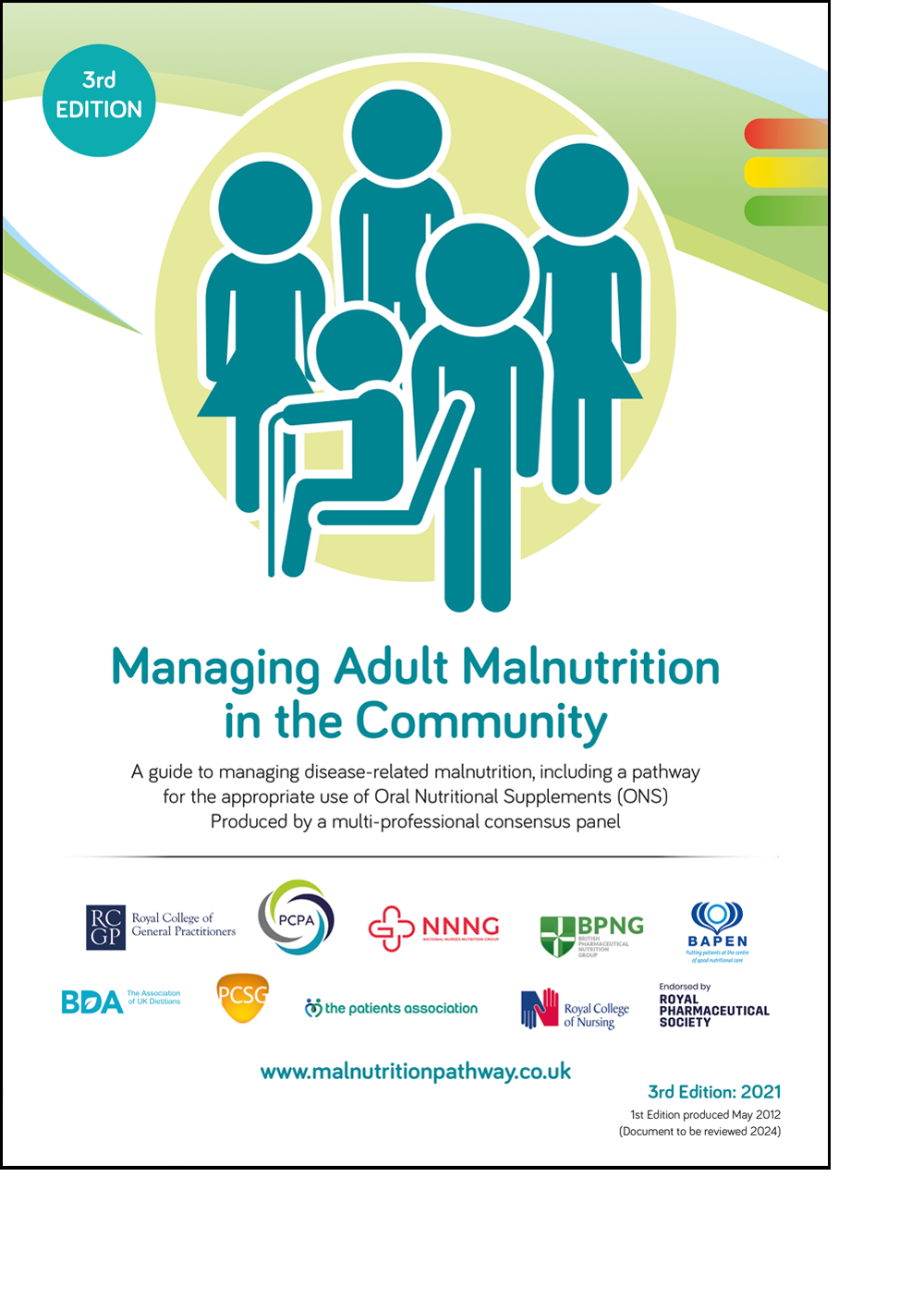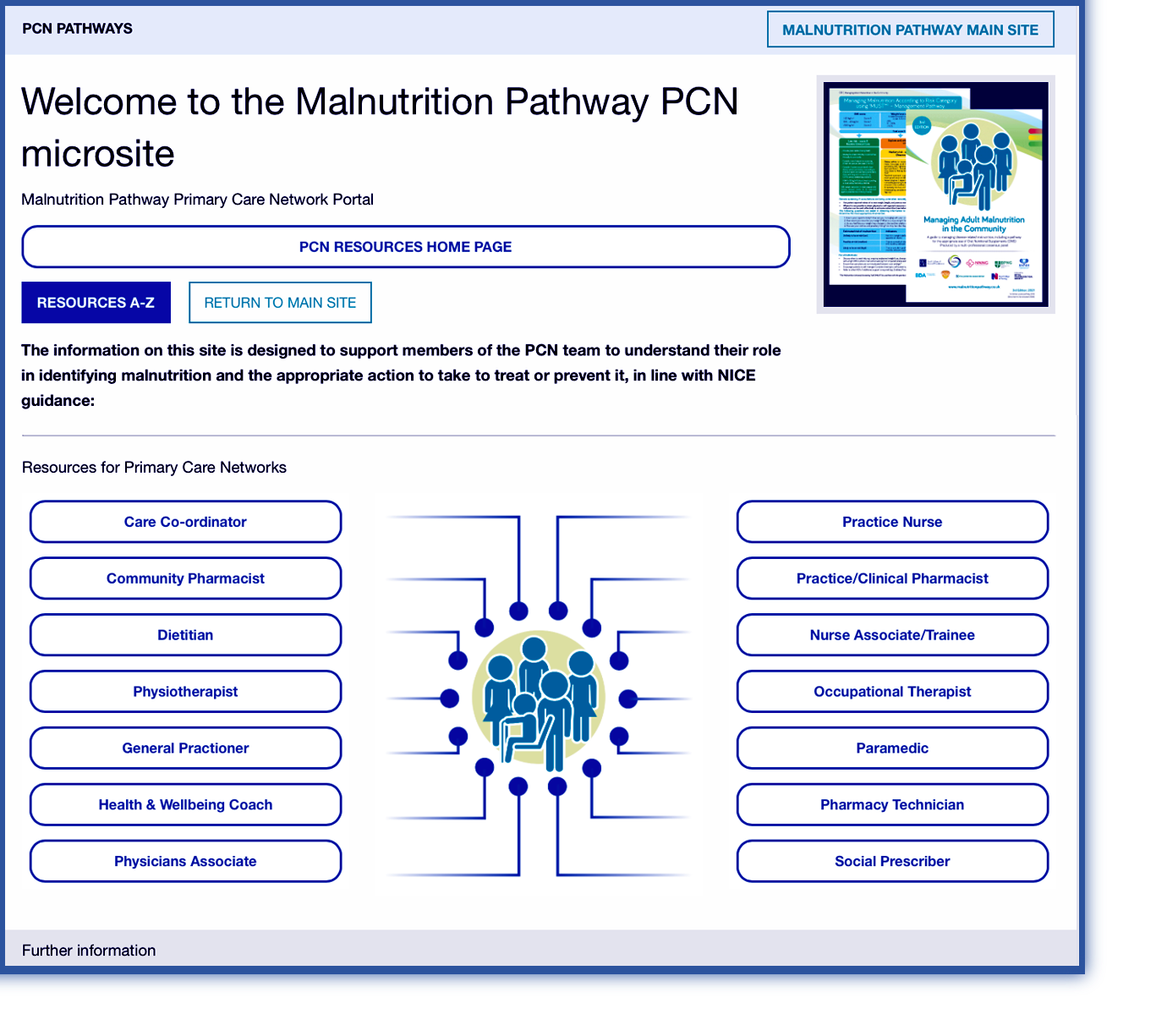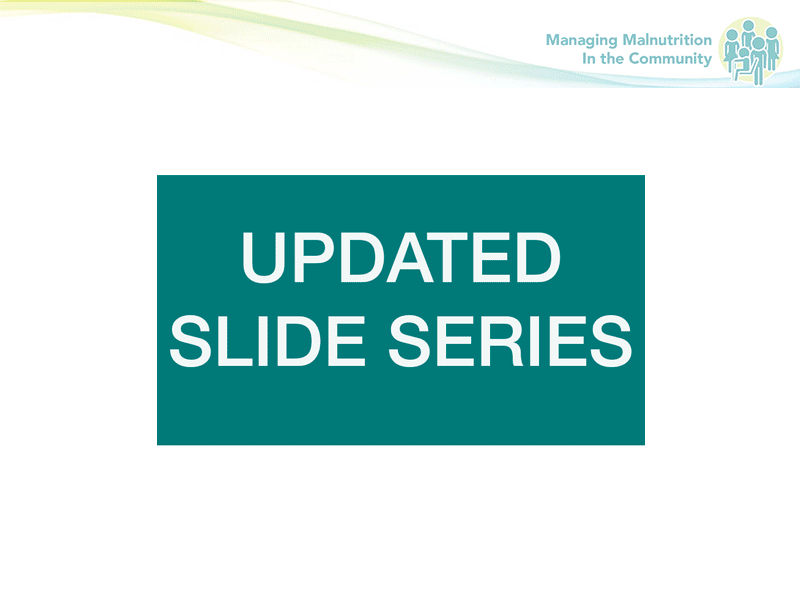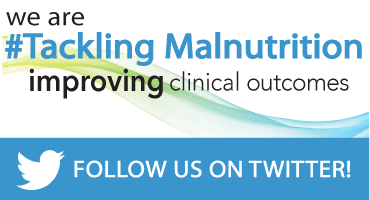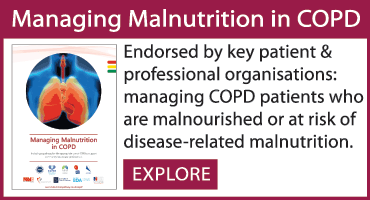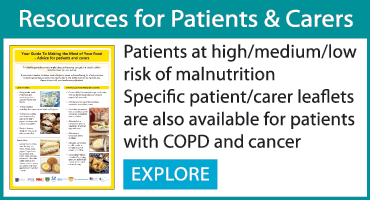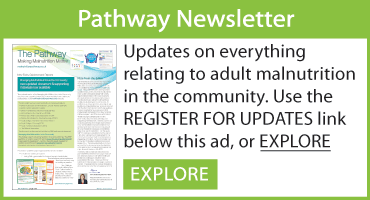
Managing Malnutrition in COPD
A practical guide to assist healthcare professionals in identifying and managing people with COPD who are malnourished or at risk of disease-related malnutrition.
GO TO RESOURCE
'Managing Malnutrition in COPD' includes a pathway for the appropriate use of Oral Nutritional Supplements (ONS) to support community healthcare professionals.
Three complimentary patient/carer leaflets are also available.
Cancer
An online resource designed for health and care professionals focusing on optimising the nutritional care of patients with cancer.
GO TO RESOURCE
Developed in conjunction with Mhairi Donald, Consultant Oncology Dietitian and Dr Anne Holdoway, Consultant Dietitian, the resource aims to enable health and care professionals to recognise nutritional issues and provide first line advice supported by downloadable patient fact sheets. It has been developed in response to a growing desire amongst patients and carers for information on diet and nutrition in cancer and includes specific information on dealing with common nutrition impact symptoms.
A step-by-step guide is also included to guide health and social care professionals.
Discharge
An online resource designed for health and care professionals focusing on TEXT TO BE PROVIDED.
GO TO RESOURCE
Developed in conjunction with TEXT TO BE PROVIDED AT A LATER DATE.
Dysphagia
An A4 eight-page fact sheet compiled by Anita Smith, Consultant/Professional Lead Speech and Language Therapist and Anne Holdoway, Consultant Dietitian.
GO TO RESOURCE
This fact sheet includes information on the causes, prevalence and clinical consequences of dysphagia. It includes tips on optimising the diet of individuals with dysphagia including how to identify those who are at risk of malnutrition. A succinct overview of the International Dysphagia Diet Standardisation Initiative (IDDSI) framework for texture modification is included as an easy reference guide.
Falls
Every year more than 1 in 3 people over 65 years of age suffer from a fall. With nutritional status being an independent predictor of falls in older people in the community and improvement in nutritional status - a factor in reducing falls risk.
GO TO RESOURCE
This fact sheet outlines key actions for implementing nutrition screening and assessment into falls pathways. The resource has been compiled by Louise Nash, Frailty Dietitian and Anne Holdoway, Consultant Dietitian.
Frailty
This guide aims to enable health and care professionals to recognise the signs of frailty, sarcopenia and malnutrition and encourage action to identify and tackle nutritional issues that are contributing and could be addressed with referral for further assessment if required.
GO TO RESOURCE
Written by Consultant Geriatrician Dr Sanjay Suman, and the Malnutrition Pathway Clinical Director and Consultant Dietitian Dr Anne Holdoway.
Malnutrition Slide Presentations
A series of slide-sets which are free to download and use.
GO TO RESOURCE
These presentations have been developed to both assist professionals in educating health and care professionals on the impact of malnutrition and demonstrate the benefit in investing in resourcing and dedicating time, to enable the timely identification and treatment of malnutrition which can subsequently reduce health and social care costs.
Nutritional Care Plans
It is estimated that 35% of people recently admitted to care homes are at risk of malnutrition. NICE recommends that all patients who are malnourished or at risk of malnutrition should have a management care plan that aims to meet their nutritional requirements.
GO TO RESOURCE
The Malnutrition Pathway has joined forces with the National Nurses Nutrition Group (NNNG) to develop three malnutrition care plans for use with patients in residential and care home settings who are either at low, medium or high risk of malnutrition according to the ‘Malnutrition Universal Screening Tool’ (‘MUST’). The care plans were designed to complement the ‘Managing Adult Malnutrition in the Community’ guide and pathway and aimed to assist nurses and care home staff in their day-to-day care and management of patients at risk of malnutrition.
Oral Nutritional Supplements
To assist healthcare professionals who are considering prescribing oral nutritional supplements for those at high risk of malnutrition.
The following resources are available:
A Pathway for Using Oral Nutritional Supplements (ONS) in the Management of Malnutrition:
GO TO RESOURCE
Oral Nutritional Supplement (ONS) prescriptions – information on what to consider when prescribing ONS:
GO TO RESOURCE
Patient & Carer Resources
GO TO RESOURCE
A selection of information sheets for patients and carers including:
Information sheets for individuals at low, medium and high risk of malnutrition and living in the community
Information sheets for individuals living with COPD and at low, medium and high risk of malnutrition
Information about the importance of eating protein and about how to get enough protein from the diet
Information on dealing with nutrition impact symptoms which interfere with the enjoyment of food including reduced appetite, fatigue, breathlessness, dry mouth, loss of taste, swallowing issues, altered bowel habit, anaemia, heartburn, reflux, nausea and vomiting
Information on prehabilitation – getting ready for treatment or surgery
Protein
Protein is essential for repairing damaged tissues, maintaining muscle and maintaining a healthy immune system.
GO TO RESOURCE
This healthcare professional fact sheet summarises the evidence-based guidelines for protein requirements in ageing and disease, with a useful list of the protein content in everyday foods.
Sarcopenia
This fact sheet outlines why it is important to identify sarcopenia in all patients whether they are underweight, normal weight, overweight or obese. It summarises the multiple factors that can contribute to sarcopenia and the potential consequences to health, giving practical advice on diagnosis and treatment according to the patients’ current nutritional status.
GO TO RESOURCE
It includes advice on how to identify sarcopenia and malnutrition, detailing the principles of management of malnutrition and sarcopenia, including guidance on optimising nutritional intake, through diet and the inclusion of oral nutritional supplements when indicated, in combination with exercise.
Using the Malnutrition Pathway: Top 10 Tips
A series of information sheets including actions healthcare professionals might consider in order to implement the use of the malnutrition pathway in their area and engage stakeholders and other community healthcare professionals in the identification and treatment of malnutrition.
Fact sheets are available for:
DIETITIANS
GENERAL PRACTITIONERS
NURSES
PHARMACISTS
CARE HOME PERSONNEL
 The Malnutrition Pathway
The Malnutrition Pathway